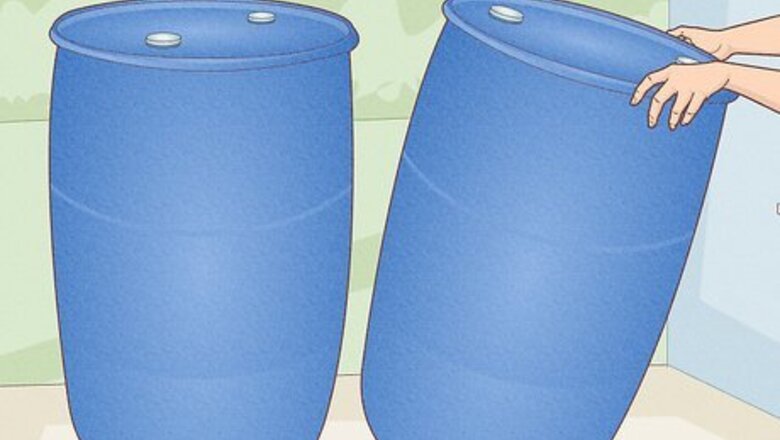
views
Getting Rain Barrel Supplies
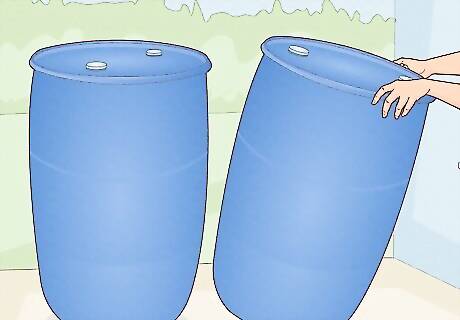
Obtain one or more water storage barrels. You can buy a water storage barrel online, but it's cheaper to get a used one from a company that uses large barrels to store food and other merchandise (just be sure to clean it thoroughly with soapy water). A rain barrel can also be made from a large plastic trash can. Get a barrel that will hold 30 to 55 gallons (113.6 to 208.2 L) of water. If you decide to get a used barrel, make sure that it didn't formerly contain oil, pesticides, or any other type of toxic substance. It's too difficult to clean these chemicals from the inside of the barrel, so using them is too risky. If you plan on collecting a lot of water, get two or three barrels. You'll be able to connect them so they're all part of the same water collection system, and this way you can have hundreds of gallons of water at your disposal.
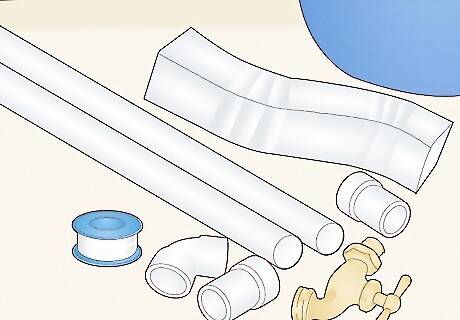
Get additional supplies to turn the barrels into a water collection system. The supplies you'll need to make your rainwater collection system can easily be picked up at a hardware or home and garden store. Figure out what you already have on hand, then gather the following supplies: 1 standard 1-inch hose spigot with ¾-in. pipe threads, so you can access water from your rain barrel. 1 ¾-inch x ¾-inch coupling 1 ¾-inch x ¾-inch bushing 1 ¾-inch pipe thread with a 1-inch hose adapter 1 ¾-inch lock nut 4 metal washers 1 roll Teflon thread tape 1 tube silicon caulk 1 “S”-shaped aluminum downspout elbow, to direct water from your downspout to your rain barrel 1 piece of aluminum window screen, to keep leaves, bugs and other materials out of your water 4-6 concrete blocks
Building a Rain Barrel Platform
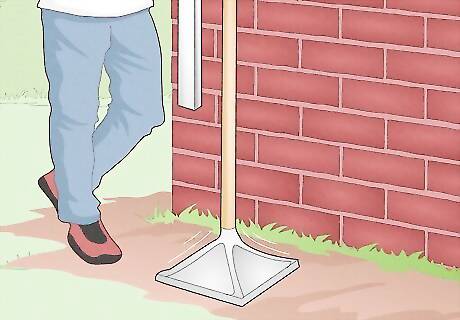
Level an area right next to your downspout. The downspout is the metal or plastic tube running from your roof's gutters to the ground. You're going to reroute the downspout directly into your rain barrel, so you'll need to prepare a platform in the area right next to it. Clear away any rocks and other debris from the area. If the ground there isn't flat, take a shovel and clear away enough dirt to flatten an area large enough to accommodate the number of barrels you have. If your downspout empties out onto a concrete driveway or patio that's situated on a hill, build a level surface by stacking a few plywood boards in the low section so you've got a level area on which to set the barrels. If you have more than one downspout on your home, choose to place the barrels near the one that's closest to your garden, so the water you collect won't have as far to travel when it's time to use it.
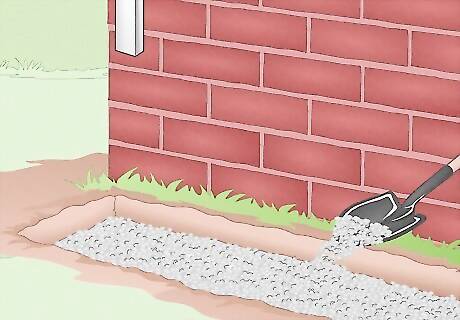
Create a layer of pea gravel. This will provide better drainage around the rain barrels and help keep water away from the foundation of your home. Dig a 5-inch deep rectangle in the area you leveled to accommodate the rain barrels, and fill it with ⁄2 inch (1.3 cm) of pea gravel. Skip this if your downspout empties onto a concrete driveway or patio.
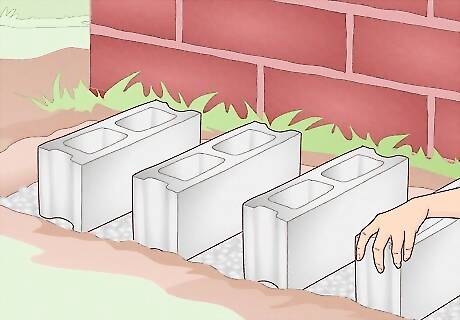
Stack concrete blocks on top of the pea gravel. Stack them sideways to create a raised platform for the rain barrel or barrels. The finished platform should be wide and long enough to hold all of your rain barrels level with each other, and steady enough that they won't tip over.
Adding the Spigot and Overflow Valve
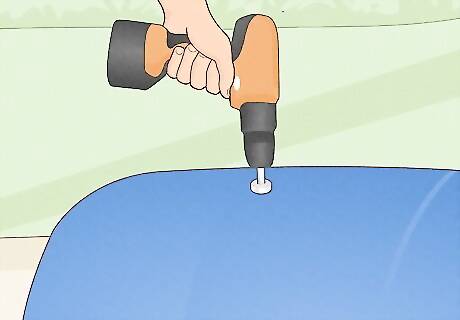
Drill a spigot hole in the side of your barrel. It should be high enough up on the barrel to fit a bucket or water jug underneath. Make a 3/4-inch hole to properly fit the spigot you bought. This is the standard size for a spigot; if you're using a different sized-spigot, make sure you drill the right sized hole so that it fits into the side of the barrel.
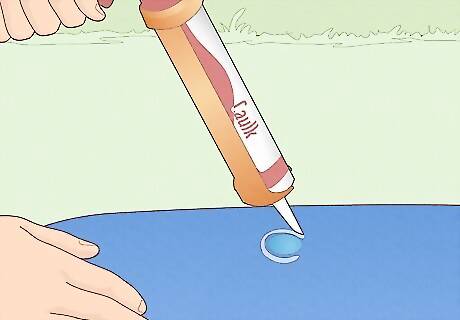
Squeeze a circle of caulk around the hole. Put caulk on both the inside and the outside of the barrel.
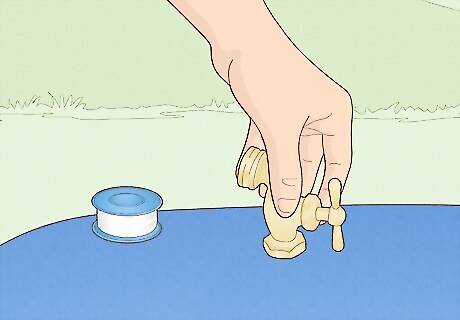
Attach the spigot. Put the spigot and the coupling together. Use Teflon tape to wrap the threaded ends to create a tight seal and prevent leakage. Put a washer on the threaded end of the coupling and insert it through the hole in the barrel from the outside. Slip another washer over the pipe from the inside. Attach the bushing to hold the spigot in place. Follow the directions for attaching the type of spigot you have. You may need to attach it differently than specified here.
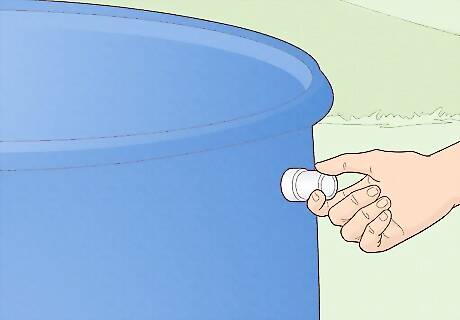
Make an overflow valve. Drill a second hole a few inches from the top of the barrel. It should be ⁄4 inch (1.9 cm), or the same size as the first hole you drilled. Squeeze a circle of caulk around the hole, both inside and outside the barrel. Slip a washer on the hose adapter and put it through the hole from the outside. Put another washer on the inside threads, attach some Teflon tape, and attach a nut to tighten the assembly. You can attach a garden hose directly to the valve. If you have a second barrel to use as an overflow barrel, you'll need to drill a third hold in the first barrel. Drill it at the same level as the spigot several inches to the side. Then drill a ⁄4 inch (1.9 cm)-hole in the second barrel at the same level as the hole you just drilled in the first one. Attach hose adapters to the holes in both barrels as described above. If you're using a third overflow barrel, the second barrel will need a second hole so you can connect it to the third barrel. Make a second valve on the opposite side of the barrel at the same level. Make a valve in the third barrel as well.
Assembling the Collection System
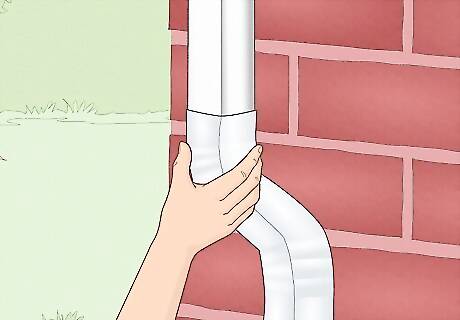
Connect the downspout elbow to the downspout. Figure out where to connect it by setting the barrel on the platform next to the downspout. It should be close enough to the downspout that you can connect it with the downspout elbow. Mark the downspout one inch below the height of the rain barrel. You'll need to attach the downspout elbow to the downspout so water will pour directly into the barrel. Use a hacksaw to cut the downspout at the mark. Fit the elbow to the downspout. Fasten it in place with screws, and make sure they're tight. As your measuring and fitting the elbow to the downspout, make sure that the end of the elbow will dip well into the barrel so all the water gets collected there. You don't want the water to be pouring into the barrel from above.
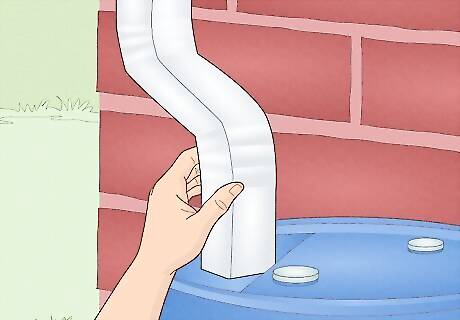
Connect the barrel to the elbow. If the barrel has a lid, use the hacksaw to cut a hole large enough for the end of the elbow to fit inside. Cover the area around the hole with the metal screen.
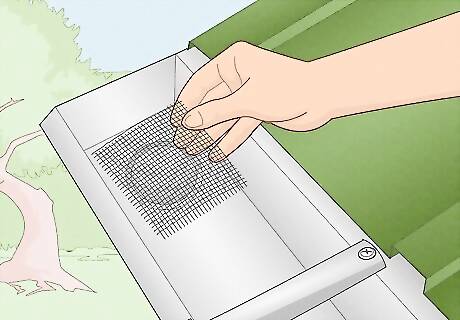
Place a filter at the top of the downspout. This will prevent leaves and other debris from running down the downspout and creating a clog in your rainwater collection system.
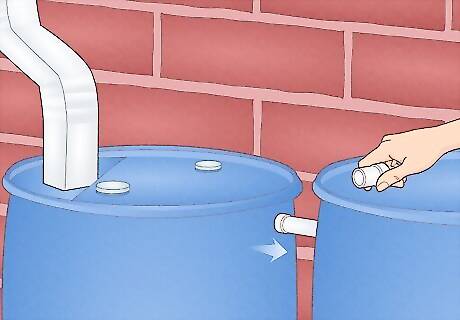
Connect the additional barrels. If you have more barrels, set them on the platform and connect lengths of hose to the valves.

















Comments
0 comment